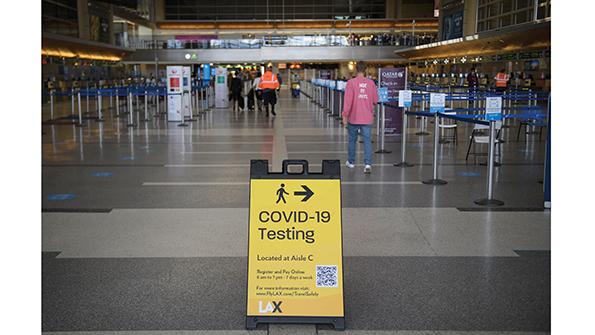
“When will air travel return to pre-COVID levels?” That arguably has been the most popular aviation industry question asked over the last 18 months. AeroDynamic Advisory undertook a bottom-up assessment in 2020 that projected late 2023 as the time when normalcy would return. Some of our clients were stunned by the pessimism, while others reluctantly agreed. We’ve stuck with this forecast, but I am beginning to think we may be too optimistic.
The emergence of the delta variant, now dominant across the world, is a potential game changer. Someone infected with it contaminates another 5-9 people, compared with 2-3 infected by the original COVID-19 strain. This means the global vaccination threshold for herd immunity is closer to 90% rather than the original 70%. It also means hospitals around the world are bursting with new patients, threatening to overrun health care systems. Some 8 billion vaccines will be required for full global coverage (see graph). Most of Asia, Latin America and Africa will be heavily affected for several years due to late and uneven vaccine coverage. The high transmissibility of the delta variant means new variants will evolve more quickly, including some with the potential to evade current vaccines.
It is against this backdrop that the return of air travel has to be evaluated. Global air travel in 2019 was 8.7 trillion revenue passenger kilometers (RPK), with about 65% for international travel. International travel remains moribund.
Governments have adopted a wide variety of policies for air travel, vaccination, tests and quarantines. Some ban all international visitors, some have established travel bubbles with certain countries, and some allow visitors but require a mandatory quarantine. Few governments have yet to factor vaccination cards into their air travel policy since there is a lack of standardization in vaccine record-keeping across the globe. Each country has chosen its own policy mix. This includes the European Union, which just recommended that its 27 nations reinstate restrictions on tourists from the U.S. because of rising delta-variant infections in the U.S.
International travel therefore entails a major “hassle factor.” Business executives must not only deal with the logistics of different test requirements but also factor in the risk of a lengthy quarantine should they acquire the virus during travel. In the price-sensitive leisure segment, travelers must pay for numerous COVID-19 tests that sometimes rival the cost of the air ticket itself and also cope with the risk of being quarantined.
Domestic markets—the other 35% of global RPKs—are also suffering. Highly vaccinated China, one-third of this total and once an aviation bright spot, is in free-fall thanks to the delta variant. Seat capacity plunged 32% in early August, and the government seems determined to eliminate COVID-19 before reopening. Russia, which has suffered more than 500,000 excess deaths during the pandemic, still has a low vaccination rate and reported a record number of deaths in July.
There is positive news. The sharp rebound in the U.S. domestic market (about 15% of global RPKs) this year demonstrates that pent-up demand is real. Global vaccine production capacity could reach 15 billion doses in 2022. One-third of this capacity features revolutionary mRNA technology, which can be quickly adapted for booster shots or to address variants as they emerge. Governments are beginning to implement vaccination mandates. And a growing body of evidence shows that vaccinated people have substantially lower mortality and hospital admission rates than unvaccinated people. This means many governments will simply adopt policies to live with COVID-19 rather than eradicate it. The U.S. and UK have chosen this path.
Can air travel demand really return by 2023? It is still possible, but an effective global vaccine rollout, improved coordination of government travel policies and a bit of good luck with the variants will be needed. Aviation stakeholders would be wise also to consider a more pessimistic scenario in their strategic planning. As Canadian academic Wade Davis reminds us, “Pandemics and plagues have a way of shifting the course of history, and not always in a manner immediately evident to the survivors.”
The views expressed are not necessarily those of Aviation Week.






Comments